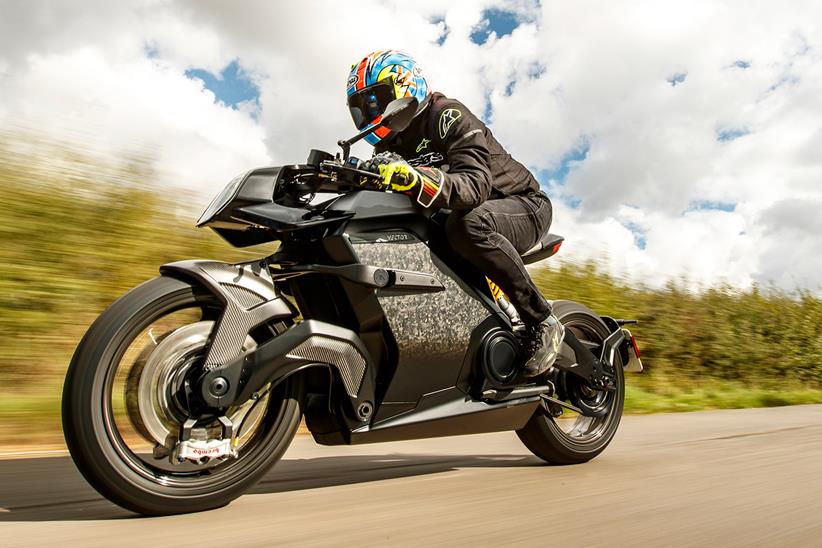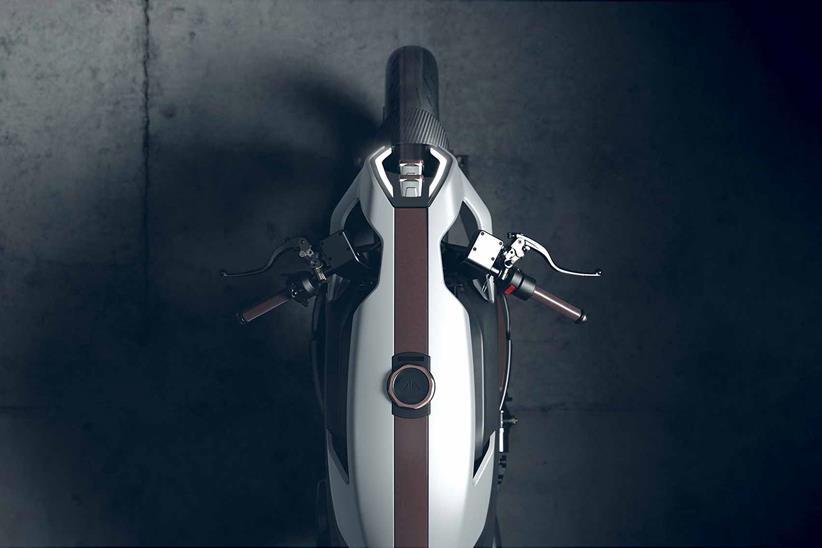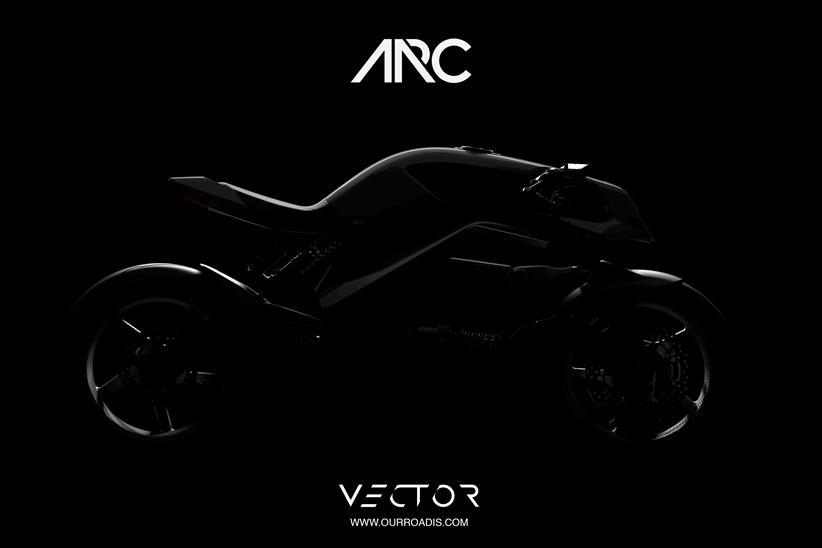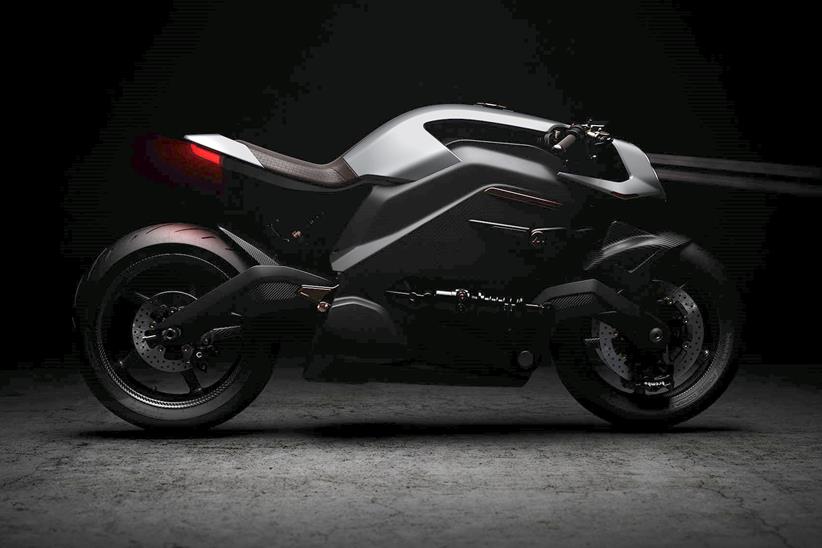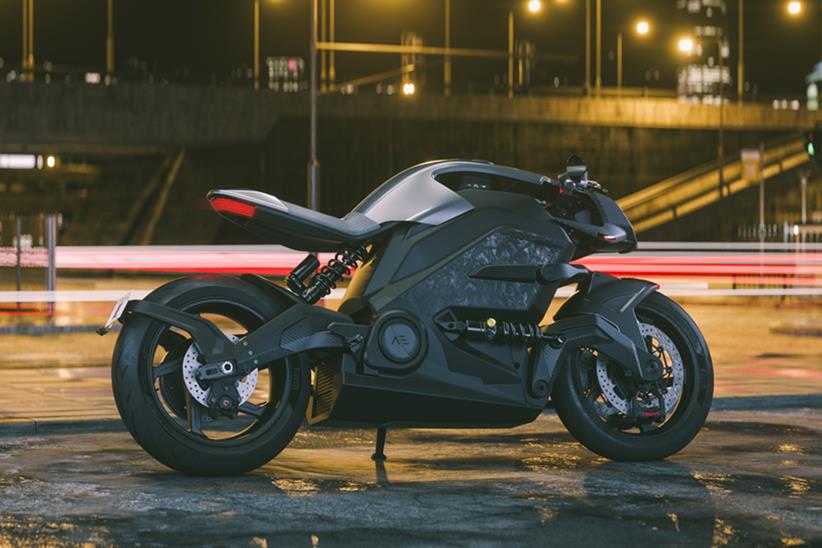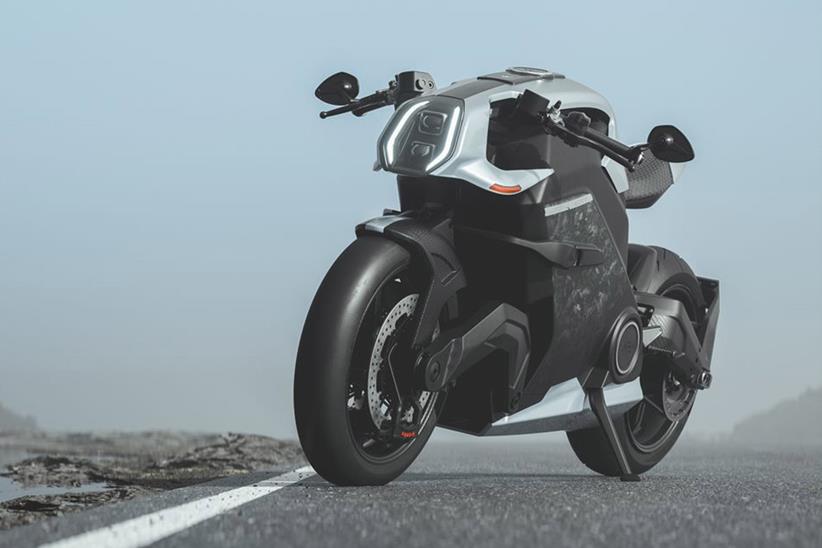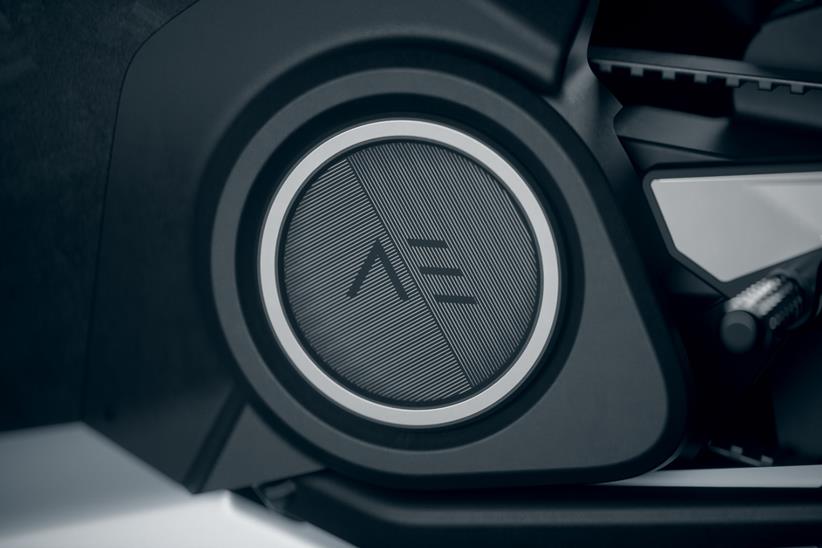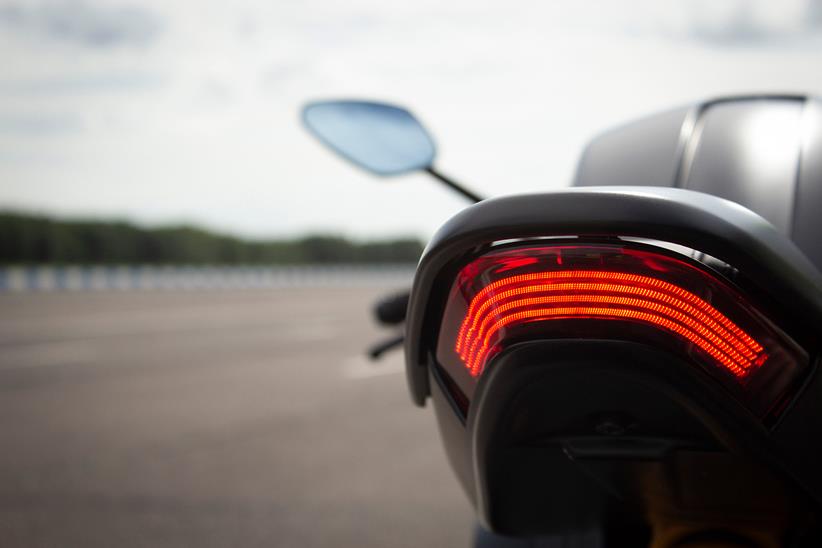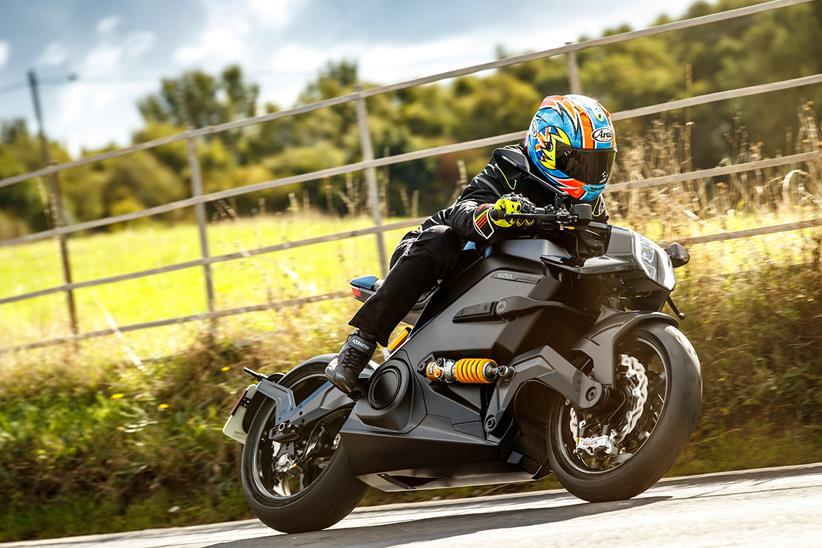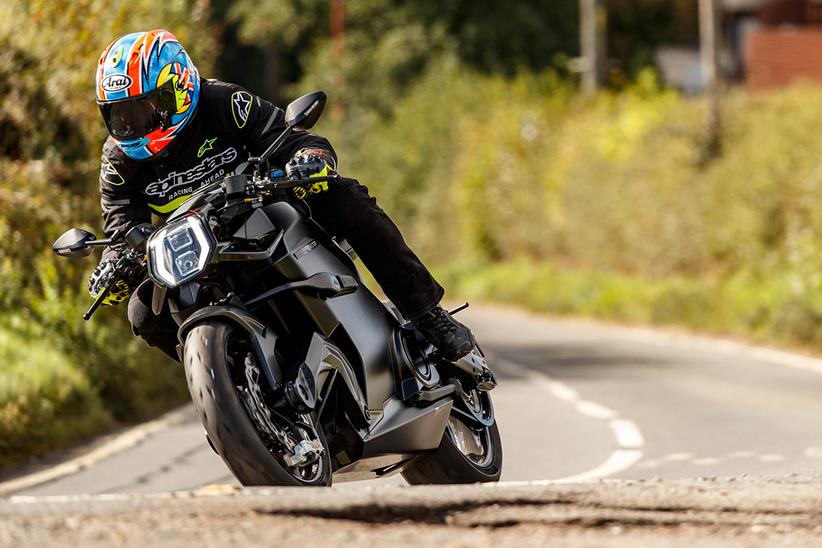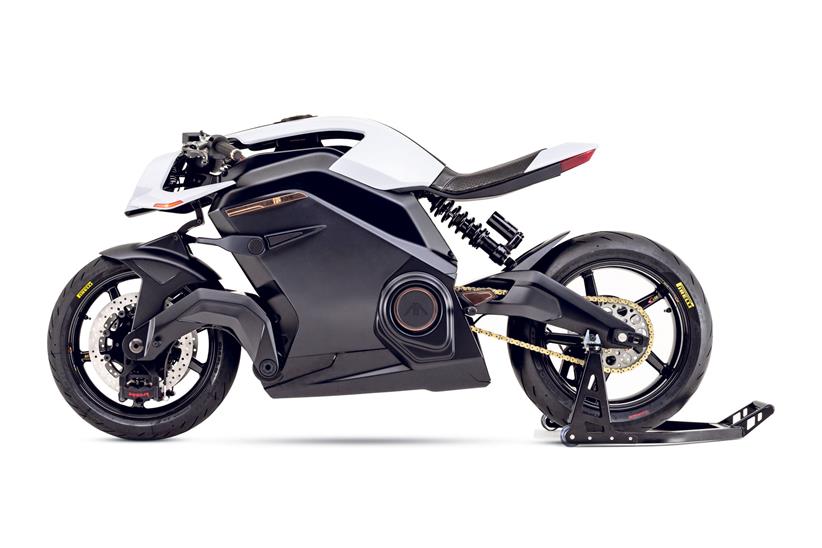'MotoE level performance': UK brand Arc deliver first Vector to movie star and firm-up plans for new supersport model
Having launched their first concept back in 2018, West Midlands electric motorcycle firm Arc have now delivered seven Vector production bikes, with the first going to Hollywood A-lister, Ryan Reynolds.
“The very first bike went to Ryan and the second went to Middle Eastern royalty,” Arc founder and CEO Mark Truman confirmed to MCN, adding that they have so far taken deposits for around 20 bikes.
The Coventry business intend to build 50 of the £98,000 Vectors over the next 12 months. The bike produces a claimed 115bhp, 128lb.ft of torque, and tips the scales at 240kg. It’s powered by a 399 volt battery, with charge times claimed at just 40 minutes.

“There’s about 25 of us at the moment, so the team is big enough to do that,” Truman said when speaking about production plans. “We get involved in lots of other stuff, so although the actual building of the bikes isn’t so much of a bottleneck, I think where we do struggle mainly at the moment is just trying to cover the breadth of things that we do.”
He continued: “We’re speaking with other large, more traditional manufacturers about helping them develop their EV bikes and also four-wheeled customers as well.”
The firm continue to develop their ‘Zenith’ head-up display (HUD) helmet and ‘Origin’ haptic jacket, which can vibrate against the rider to warn of dangers. This is with the help of 10 dedicated (and affluent) customers, in Arc’s Angel Edition (AE) programme.

“We’ve been doing a huge piece of work looking at new technologies,” the Arc boss went on. “Things have moved on in the last few years – particularly the HUD space… and we’re going to be going on quite a big recruitment drive to grow the team and increase the facility size.”
Racing ahead
Truman shed more light on the next model, which will have a supersport focus. “I definitely want to take the business and give it slightly more of a motorsport angle,” he said. “Our bread and butter is going to be road bikes, but it’s become clear that if you’re going to charge a high price point, you have to hang your hat on why you’re able to charge that.
“Electric vehicles need to go and prove their capability. We all know that petrol derivatives have been higher performance up until now – especially in terms of being able to maintain that performance – because of battery capacities, temperatures and so on,” he added.
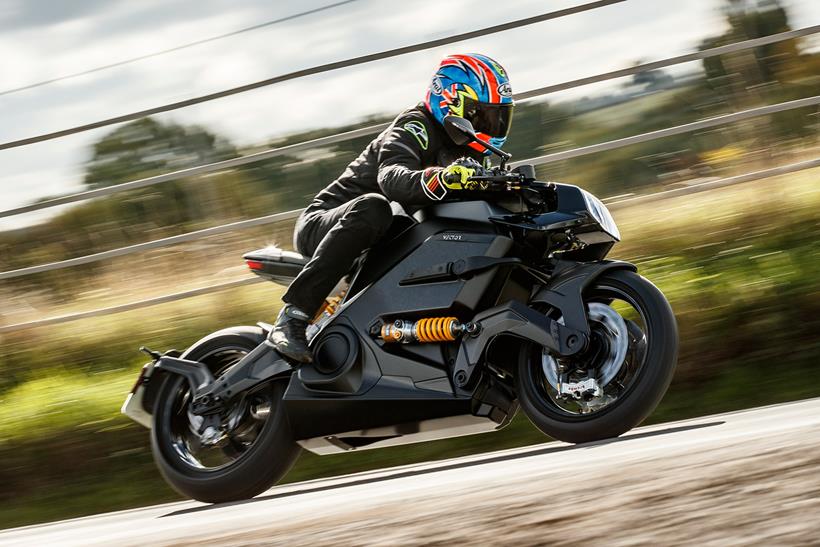
This is where the new bike comes in. Truman says we will begin to see teasers in the first half of 2024, with production bikes available the following year.
“We expect that to be MotoE levels of capability,” he added. “In fact, I’d love to think that we could hit some quicker lap times than Ducati’s MotoE bike, so that’s what we’re aiming for. We’ll probably be looking to start proving its capability in terms of the motorsport element next year,” he said. “As a motorcycle fan and a motorsport fan, you dream of getting involved in this. It’s got everyone here very excited.”
Guardian angels: Arc unveils plans for high-tech ‘human machine interface’
First published 29 July 2022 by Ben Clarke
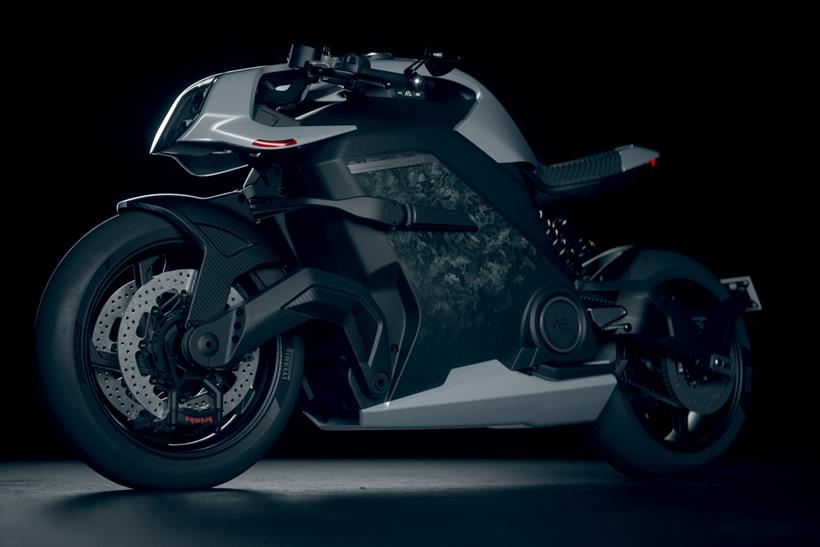
Luxury electric bike firm, Arc, have announced a new programme that allows ten customers to become part of the development process for their first bike. We saw last week that former MotoGP and BSB rider James Ellison had been helping the firm make the final performance tweaks to the firm’s Vector model.
But under what is being called the AE programme (which stands for Angel Edition… Arc Angel, get it?) customers will help to develop the bike’s next-gen safety system.
Back when the Vector was first unveiled, Arc were talking about a helmet and jacket that would be linked to the bike and provide the rider with information. The helmet would do this with a heads up display (HUD) and the jacket would use ‘haptic feedback’ – a system that can vibrate to literally tap you on the shoulder to alert you of impending danger.
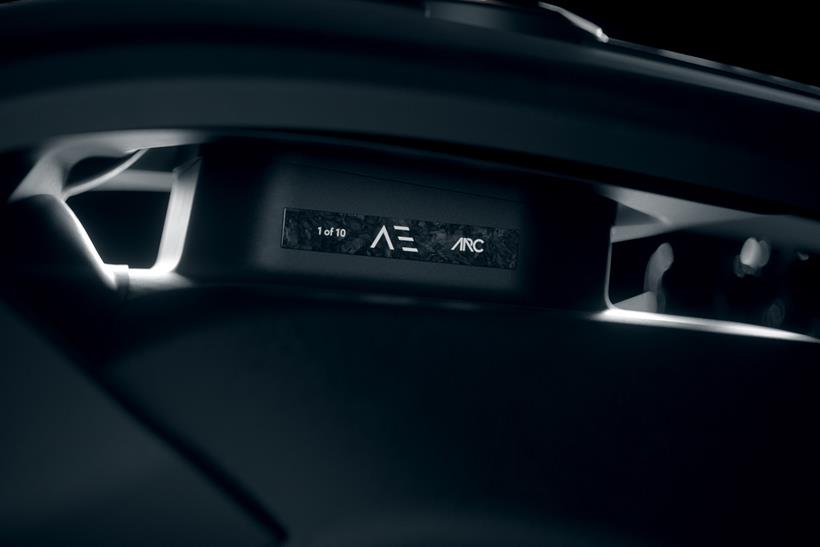
This advanced safety net, which Arc call the human machine interface (HMI), is the part that ten lucky (and affluent) customers will be a part of.
“We wanted to give those involved in the AE Program the ultimate peek behind the curtain,” said Arc founder Mark Truman. “How often do you get to be part of the development of such ground-breaking technology, integrated into the Arc family and the project team?
“We expect the project to take 2 years from customers receiving their Angel Edition Vectors, so we are looking for customers that can set aside the amount of time they will need to complete the project, 5-10 days, and the commitment to be able to stay the course.”
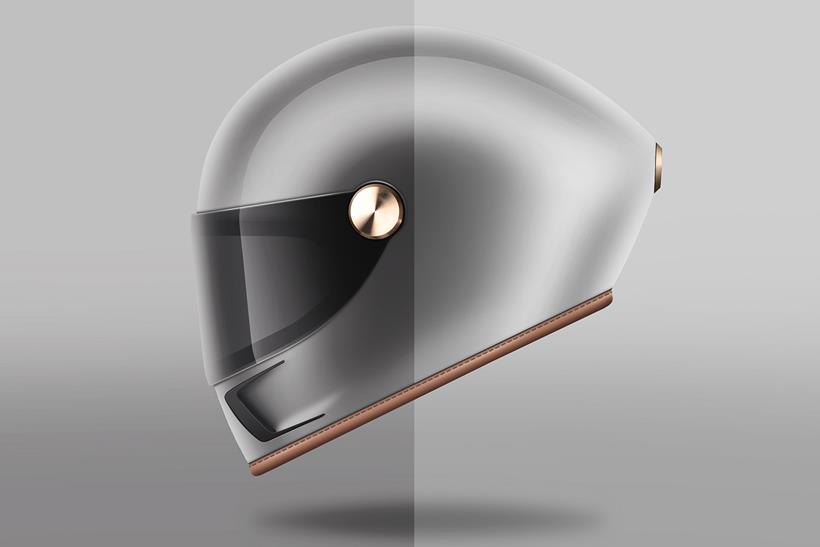
Arc’s new helmet is to be called the Zenith and is being developed with fellow british firm, Hedon. The Wi-Fi enabled lid will connect with the Vector’s computer to provide sat nav, speedo and ancillary graphics through its HUD. It will also take a feed from the bike’s rear facing camera allowing the rider to see what’s happening behind them.
The helmet’s features will be voice-activated for hands free use and Arc say the HUD ‘will be a major step forward over previous monitor and prism-based systems’. The Zenith will also act as the key to the bike so no more bulky fob in your pocket or left behind at a fuel station.
The Arc Origin jacket has three modes; Urban, Sports and Euphoric. Urban focuses on safety features like the previously mentioned shoulder tap, whereas Sport is more performance based. Using information from the bike’s myriad sensors, Sport mode lets the rider know how close to the limit they are riding. Arc give the example of getting more feedback the harder you brake.
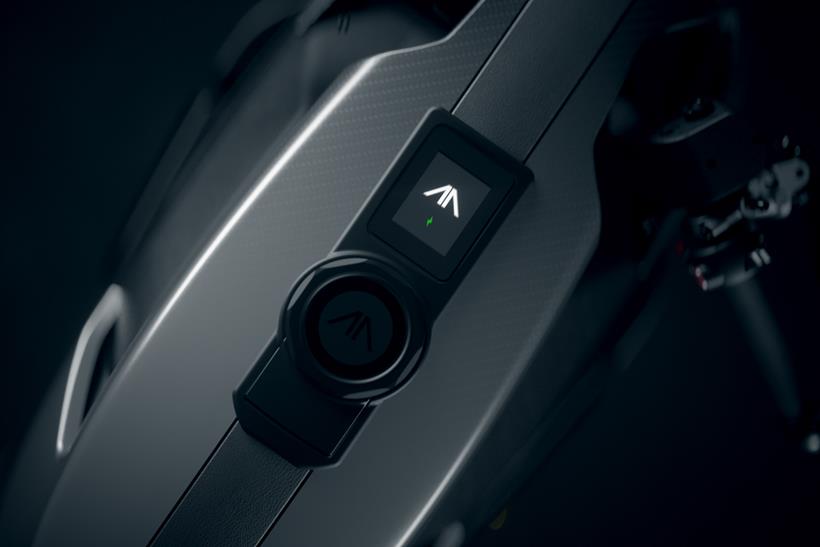
Euphoria mode uses tech lifted from the entertainment world and plays music through the haptic as you ride. This will mean you can feel the bass in a way not possible from helmet or bike mounted speakers alone.
Taking part in the AE programme doesn’t come cheap. Prices for becoming an Angel start at £110,000. Initial testing will take place on tracks in the UK and America and the Angels will then get upgraded Beta versions of the Vector to test on the road, based on their individual feedback. After a final round of testing, the Angels will get the first of the finished versions before it is offered to all Vector owners.
Arc Vector set for production in 10 weeks: Former MotoGP and BSB rider James Ellison helps make final tweaks
First published on 19 July 2022 by Dan Sutherland
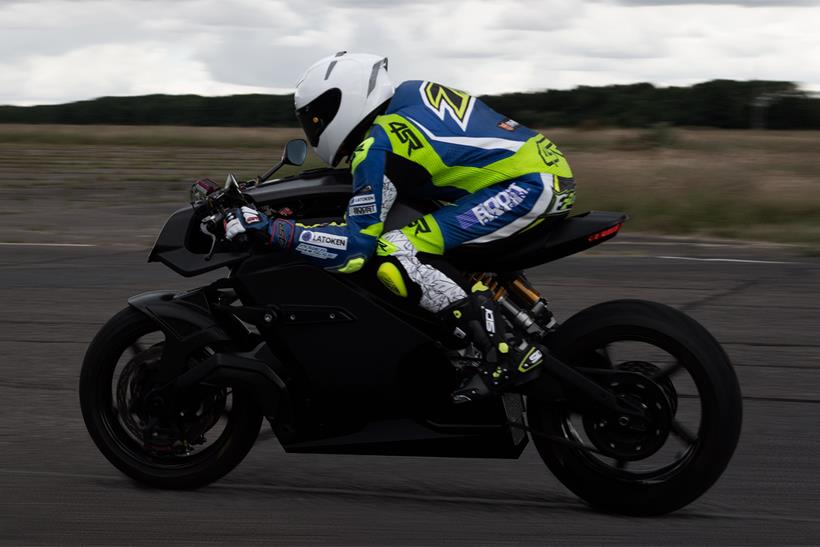
Coventry-based electric brand Arc have confirmed that customer-ready bikes are just 10 weeks away, having now completed their on-track handling tests with former MotoGP star and multiple British Superbike race winner, James Ellison.
“James has worked with us to define the production settings that will go to customers in 10 weeks,” company CEO Mark Truman said in a statement. “Arc are going to launch a very exciting program for 10 special customers, people who want to be part of the future of motorcycle technology.”
Exactly what that will look like remains to be seen at this time, however the company’s website states they are due to launch something called the ‘AE Program’ on Friday, 29 July 2022.
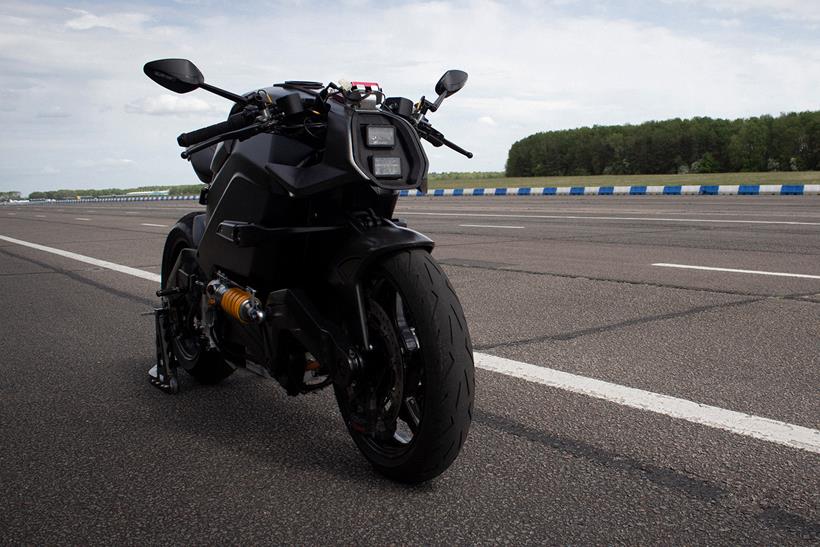
Made in Britain, the Vector is an ultra-premium performance plug-in, with a claimed 436km range and charge time of 40 minutes.
Weighing in at an indicated 230kg, it’s powered by a 399V battery pack, which is housed in a carbon fibre monocoque frame, rather than a traditional motorcycle chassis.
Cumbrian rider Ellison completed two full days of development alongside Truman, with a special team from Öhlins Suspension also on hand to ensure that a full range of road and race options could be tested.
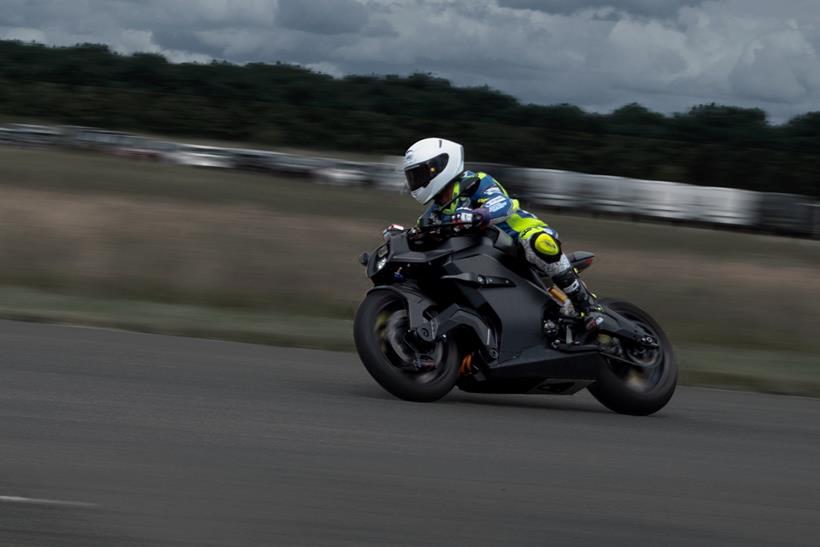
“It is incredibly important that the Vector handles impeccably,” Truman said. “We developed the Vector’s unique front suspension and steering configuration to surpass the agility and dynamics of off-the-shelf front forks.
“To ensure we get every last drop of performance out of the system we have enlisted the help of Ex-MotoGP rider James Ellison,” he continued.
For those unfamiliar, the Arc Vector uses a carbon front swing arm and hub centre steering, rather than conventional forks. Although a system not traditionally favoured by mainstream manufacturers, Arc say the design allows for increased stiffness and the ability to run steeper steering angles for increased agility on the motorcycle.
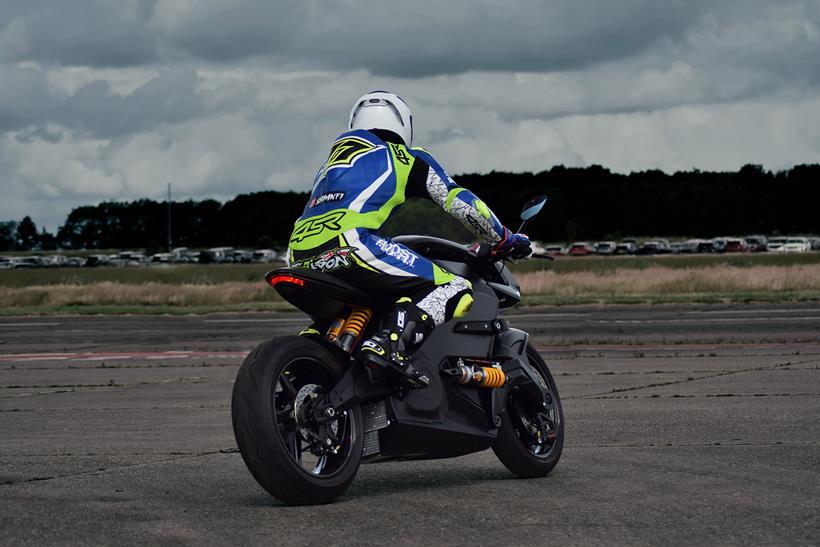
As such, the Vector uses a 20-degree rake angle – four degrees steeper than a current Honda CBR1000RR-R Fireblade SP and already no slouch when changing direction.
“The way the machine carves up corners is incredible,” Ellison said – having worked with the team to finalise the spring and damper settings.
“[The] Vector is definitely big on grin factor, it’s just so different to anything you will ride,” he continued. “I’ve been really surprised by the agility, the bike changes direction like a much smaller bike due to the steep steering angle it can run. This means the bike can be flicked from side to side with little effort.”
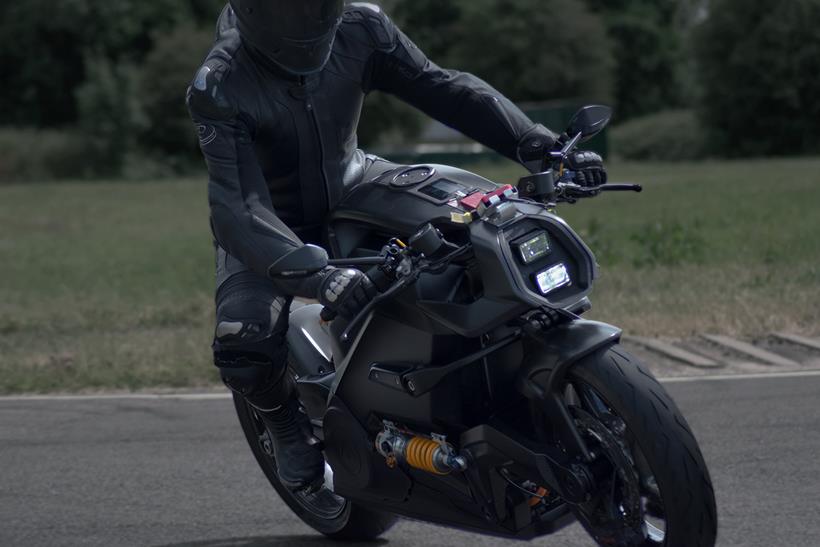
This was added to by Truman, who said: “Riding the Vector alongside James has been fantastic, his perception and feeling for the slightest change to the settings are second to none and his experience goes without saying.”
Although now just 10 weeks away from production, the firm pulled the covers off the first Vector concept back in 2018, with a projected £90,000 asking price. Following a fundraising campaign that generated nearly £1 million, Arc Vehicle Ltd then entered administration on September 4, 2019, after being let down by key investors.
Undeterred, Arc have battled through, with a 30-strong team from across the automotive industry working behind the scenes to deliver the bike we see here today.
Arc Vector spec and performance
230kg
436km range
124mph
40 minutes charge time
805mm seat height
1450mm wheelbase
399V battery pack
Under the skin of the £90,000 Arc Vector electric superbike
First published on 15 December 2021 by Jordan Gibbons
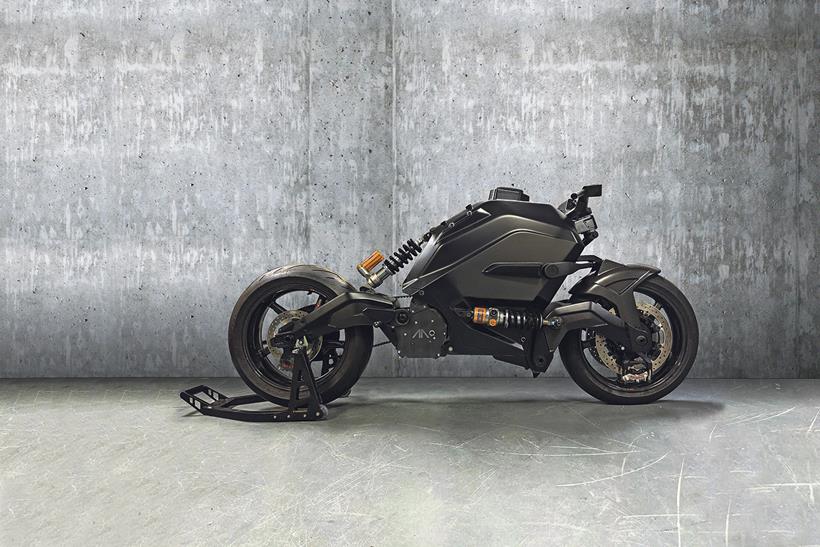
The Arc Vector grabbed headlines when it was unveiled back in 2018 and while the bike hasn’t had the smoothest run into production the firm are finally putting production-spec machines into their last homologation tests before customer deliveries begin.
The Vector didn’t just promise class-leading figures in terms of power, weight and recharging times at its 2018 reveal. It also introduced ideas including a helmet-mounted head-up display, voice control and haptic feedback via a collaboration with Knox.
The Arc Vector story
- Arc enters administration
- Exploring the Arc Vector’s hub-centre front end
- Arc open crowd funding scheme
- Arc Vector: the story so far
- Eicma 2018: Arc Vector revealed
- Arc Vector back on track
Even with a projected £90,000 price, the bike attracted attention, investment and orders, but Arc went into administration in September 2019 when key investors let the company down.
A year later, Arc’s founder – former Jaguar Land Rover engineer Mark Truman – rescued the project, buying the assets to revive his dream. Since then, development has continued, reaching the stage now where customers will soon receive their machines.
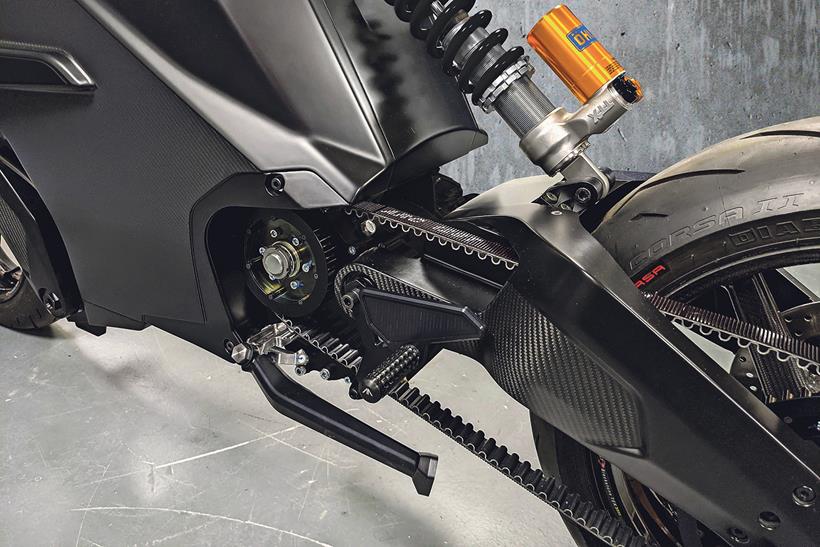
Although the Vector has been seen at shows and events before, this is the first time the company has shown what lies underneath its carbon-fibre skin – and it’s a lot more carbon fibre!
In fact, the bodywork is quite minimal. The headlight, ‘tank’ section (where the CCS DC charging port sits) and seat are a single piece that sits on top of the main carbon monocoque, which houses the battery cells. A bellypan usually hides the Arc-made, rare-earth magnet AC motor, but the visible sides of the bike are the monocoque itself.
The essence of the production Vector remains much the same as the original design, including the carbon fibre front and rear swingarms, with a double-wishbone hub-centre front-end that promises to combat the usual criticisms of such systems by positioning the main arm’s pivot lower than the axle, so there’s still natural dive during braking.
The direct-action Öhlins TTX shocks are also unaltered, as is the scissor-style steering system that minimises the linkages between the bars and front wheel to eliminate slop. However, where the original design had a chain drive, the final machine uses a quieter, cleaner, belt drive.
Truman said: “The architecture featured in the images is now production-ready and a number of production spec Vector motorcycles will be out in Spain for final sign-off and homologation over the coming months.
“We have a very healthy order book and customers are already going through our new commissioning suite in central England to individually tailor each Vector motorcycle.
“Keep your eyes peeled for a very special limited edition that we will be launching early next year that will allow customers to get closer to their technology and be involved in the creation of future cutting-edge tech breakthroughs.”
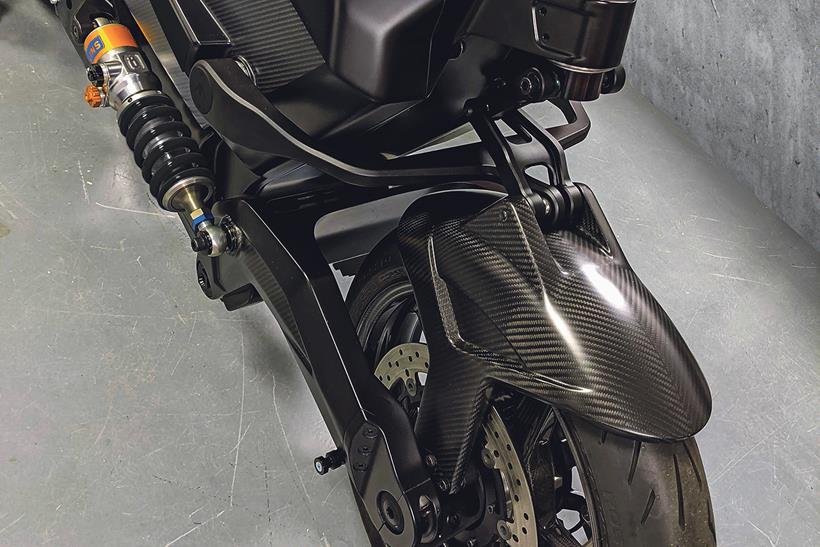
Arc Vector details explored:
- Arc-designed motor The permanent rare- earth magnet AC motor is also integrated with the monocoque, driving the rear wheel via a single-speed reduction gearbox and a new belt final drive. Adaptive regenerative braking helps extend the range.
- Performance and range Arc says the Vector is good for 124mph, hitting 62mph in 3.2 seconds and achieving 271 miles between charges. Charging time is just 40 minutes via a CCS (Combined Charging System) socket – the same used by many electric car makers.
- Hub-centre steering The chassis ends of the upper and lower front arms are lower than the ends attached to the wheel, inducing familiar dive under braking. The carbon upright doubles as the front mudguard and a mount for both the upper arm and the scissor-style steering link.
- Customisable ergonomics Arc will machine bespoke bar and foot peg mounts for each buyer, allowing them to tailor their relationship to the 840mm-high seat.
- Carbon monocoque The main structure of the chassis is in the carbon skin around the 399V battery pack, helping keep weight down to a competitive 220kg, assisted by the use of carbon for both swingarms and the BST wheels.
‘Perfection is worth fighting for’ – Arc creator and now owner says project is back on target
First published on 14 April, 2021 by Jordan Gibbons
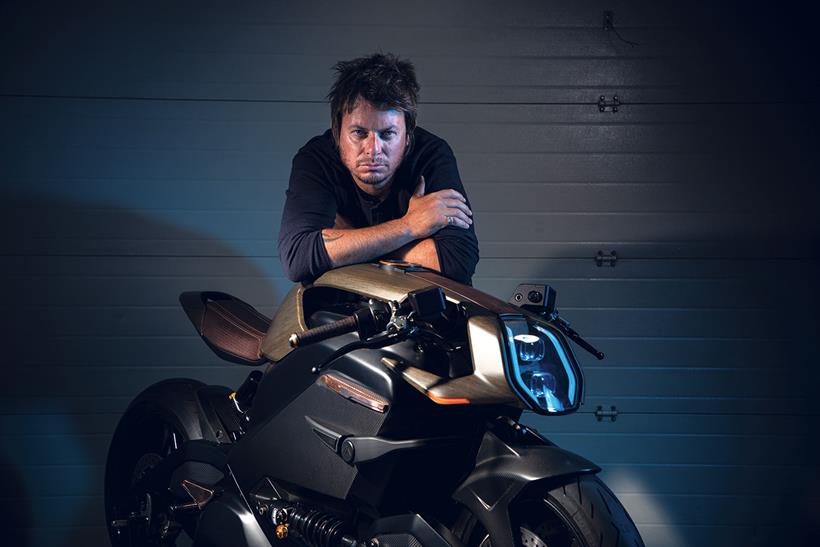
The Arc Vector burst onto the scene in late 2018, promising unparalleled performance. At the time Arc said the electric hyper bike would weigh just 220kg, produce 133bhp, fully charge from zero in 45 minutes and, most impressive of all, manage over 360 miles between plug ins.
The Arc Vector story
- Arc enters administration
- Exploring the Arc Vector’s hub-centre front end
- Arc open crowd funding scheme
- Arc Vector: the story so far
- Eicma 2018: Arc Vector revealed
But the project fell on rocky ground when the UK company were let down by investors with the firm entering administration a year later.
Then in October 2020, Arc founder Mark Truman revealed that he had bought the project back himself and that the Vector would once more head towards production. Six months on, MCN spoke to Truman to find out what the next steps are.
“We are a pretty down to earth honourable bunch, doing what we do because it’s what we believe in,” says Truman. “To keep this level of integrity, Arc won’t take on non-aligned investment to make the dream a reality. The type of investment that would see us lose control of our brand, our philosophy and our values.”
Without outside investment, the project might move a little slower than initially anticipated, and it will also need to bring in money by itself. Truman is keen Arc doesn’t become another loss making electric business kept afloat with other people’s money. To do this, they’re branching out to support the project.
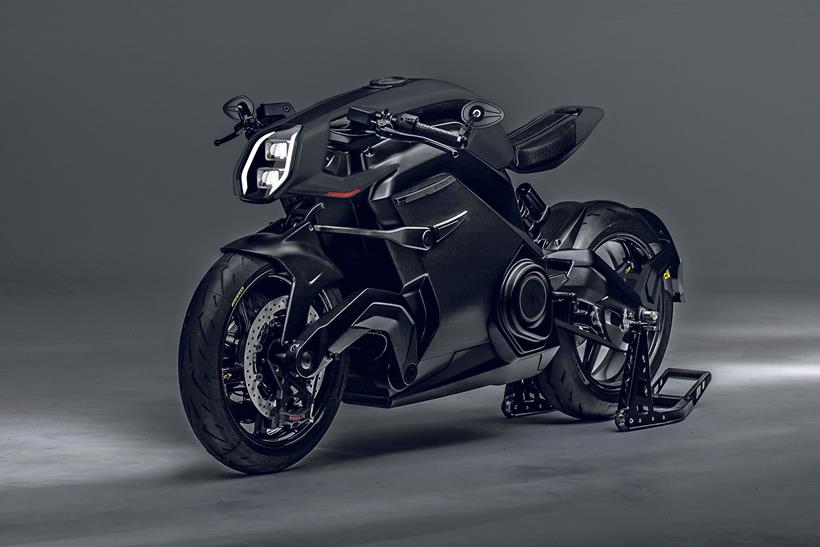
“In the background we have been working with a number of two, three and four-wheeled vehicle manufacturers to help them develop their EV propositions through the Arc technology we have created,” says Truman.
“It is through this work that Arc is now fully self-funded – organically growing and developing the Vector to our own tune. If people like what we are doing and believe in the things we stand for, then I hope they can help promote and support us once we have proved we deserve it.
“Arc are rewriting the rules of motorcycle design. We’re not just putting together a frame with a battery, motor and a set of forks, this is a new construction philosophy – almost every idea, concept, component and technique is new. We are building our perfect motorcycle and we are incredibly close but bear with us – perfection is worth fighting for.”
Arc set to return after founder revives high-end e-bike brand
First published on 1 October, 2020 by Jordan Gibbons
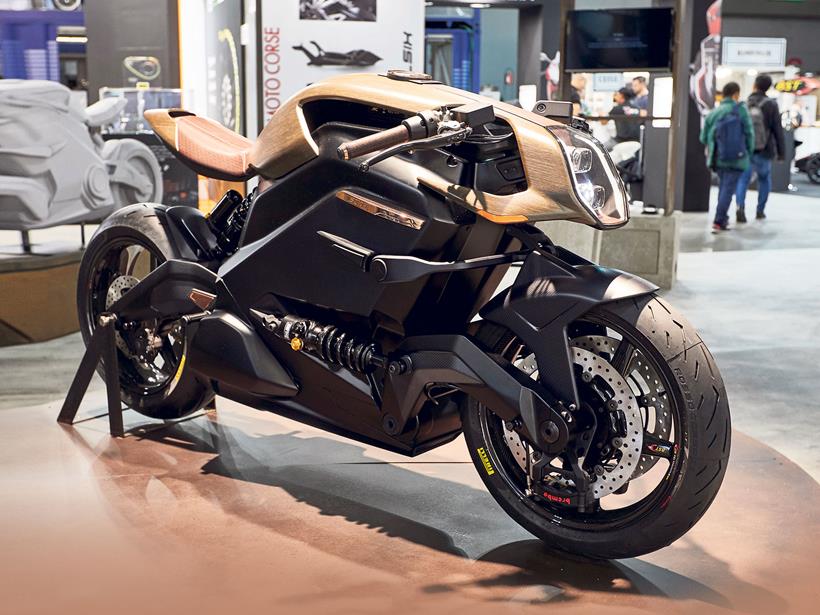
Arc are set to return after the founder rescued the project from administration hell. Arc rose to prominence last year with the Vector: an electric hyper naked with big promises on weight, power and charging time as well as a hefty price tag to match.
However, the company ran into financial difficulties in September 2019 before the project could reach fruition. Now the founder, who also designed the original concept, has bought back the key assets from the administrator and is getting the project moving again.
“We had lots of interest after the administration but nothing quite worked out,” says Arc founder Mark Truman. “I decided to buy the assets myself four months ago. The project had come too far and had been too well received for me to not continue with it.
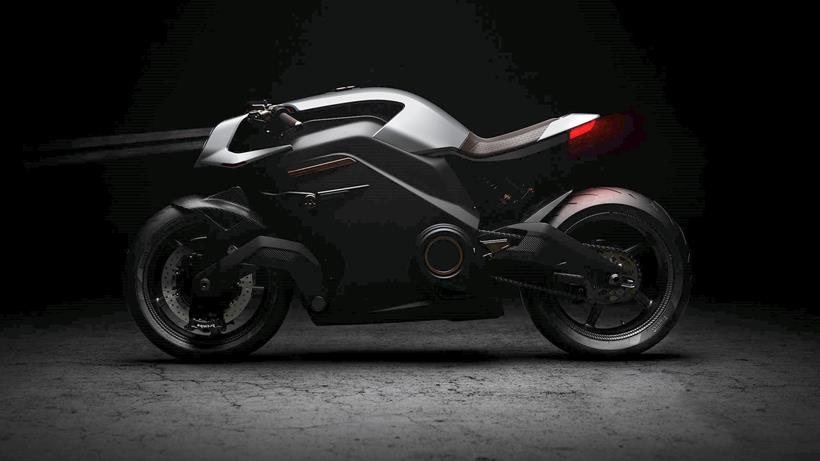
“The global support we had from people was astonishing and really left me with no other option.”
If you’re not familiar with the Vector, it’s a project spun out of a concept Truman designed while he worked for Jaguar-Land Rover. Using their expertise and technology, Truman and the team designed an electric motorcycle featuring groundbreaking technological advances.
As well as a claimed weight for the Vector of just 220kg, Arc also promised that the latest battery tech gave it a range of 362 miles, with a recharge time of just 45 minutes. The key to its low weight was a carbon-fibre monocoque chassis with the batteries inside, as well as using two carbon swingarms instead of forks at the front end, akin to the Bimota Tesi.
Related articles on MCN
- Best electric motorbikes of 2020
- Repairing your motorbike on the move
- Best electric motorbikes coming soon
Unlike the Tesi, however, the geometry promotes dive so the riding feel is similar to a conventional bike. Performance promised to be impressive too with claims of 133bhp with 292lb.ft of torque.
Arc also planned for the Vector to pair with an HUD helmet that acted as the key and a jacket, which provided haptic feedback such as a tap on the shoulder when a vehicle appears in your blindspot.
“Without the pressure of a big company, we’re taking things a little slower now,” adds Truman. “The first bikes will be delivered to their customers in 12 months. We are going to offer 10 customers a very special opportunity on the first 10 Vectors. I’m not revealing what this is just yet but watch this space.”
Keep your eyes peeled for a full reveal of the new machine over the coming months, as well as an exclusive first ride report.
Back in the Saddle! pic.twitter.com/d1IEVZ6vzz
— Arc (@ArcVehicle) September 24, 2020
Arc enters administration: £90k Vector project in jeopardy
First published on 2 October, 2019 by Jordan Gibbons
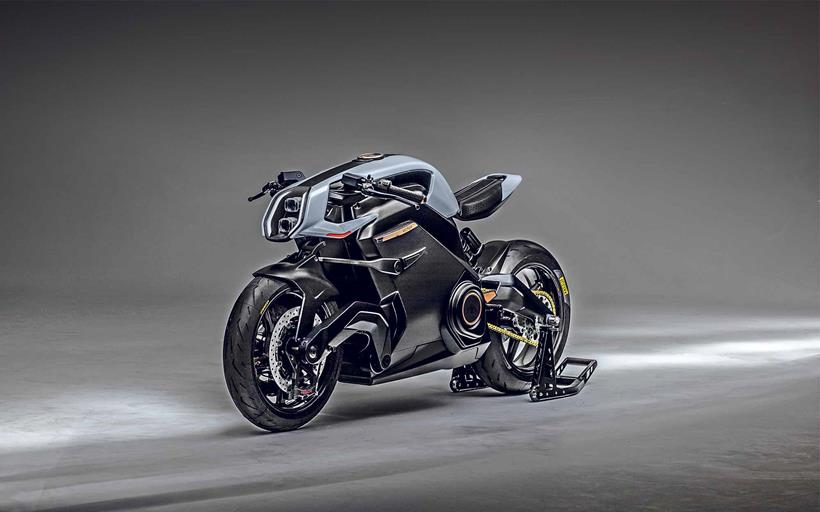
The company behind the Arc Vector electric motorcycle has run into financial trouble. Arc Vehicle Ltd entered administration on September 4, with administrators Leonard Curtis appointed to take charge of the business.
The news comes just a couple of months after Arc raised nearly £1 million and unveiled plans for a huge new manufacturing facility in St Athan, Wales with Vector production set to commence next year.
“The company has gone into administration because a couple of investors have let us down – they’ve promised us funds that have just never materialised,” Mark Truman, CEO of Arc Vehicle told MCN.
“There’s absolutely nothing wrong with what the team have done on the project.” In July Arc completed an equity crowd funding campaign on investment website Crowdcube, raising more than £950,000.
“The Crowdcube funding round was successful and we had more than 1000 investors pledging over £1 million, but we didn’t take the money in the end,” says Truman. “I didn’t want to take the money off ordinary people in the motorcycle community and find ourselves in the same boat in eight weeks.”
The potential demise of Arc’s Vector is a blow for the electric bike market because its creators appeared to have solved many of the problems that beset alternative fuel vehicles – crucially power and weight.
The claimed weight for the Vector is just 220kg, thanks to its innovative carbon fibre monocoque chassis, and Arc also claimed that the latest battery tech gave it a range of 362 miles, with a recharge time of just 45 minutes.
Performance is claimed to be 133bhp with 292ftlb of torque. Not only that, but Arc had planned for the Vector to be one of the most technologically advanced motorcycles available, with haptic feedback offering an involving experience and a matching head-up-display-equipped helmet.
The firm being in administration does not necessarily mean the end of the project. “We have until October 10 to raise funds. We’re still here, still working and trying our best, but if we don’t manage to raise the money, then the administrators will begin the process of selling the business.
“We need an investor who is passionate about motorcycling and what we’re doing here,” says Truman. If you think that’s you then you can contact Mark here: mark@arcvehicle.com
Explained: Arc’s new hub-centre front end
First reported 12 July, 2019

The Arc Vector electric motorbike is a technical pioneer in many ways with its large capacity batteries, fast recharge time, and heads-up display but it’s also something of a suspension innovator, too.
Hub-centre 2.0
Up front the Vector has hub-centre steering. Arc aren’t the first to do this – Jack Defazio pushed it heavily in the 1970s, Bimota had a crack with the Tesi and, of course, there was Yamaha’s GTS1000 – but as all those attest, it’s never taken off. That’s because those systems had flaws and, you guessed it, Arc reckon they’ve solved them.
“In my early career I did a lot of work on ‘funny front ends’,” says Mark Truman, Arc CEO. “I realised there was real potential – hub-centre racers have always delivered good results – but that it needed more development.”
Pivot point is key
The key, Truman says, is the placement of the front swingarm pivot point. On a standard hub-centre set up, the pivot point of the swingarm is above the axle. That means as the brakes are applied the force acts to lift the bike up, which compared to a lifetime of riding bikes with telescopic forks can feel weird.
It also affects handling.On a standard bike when you apply the brakes the front-end dives, reducing the steering head angle, shortening the wheelbase and shifting weight onto the front tyre – helping the bike corner. On a typical hub-centre motorcycle this doesn’t happen, which can cause them to run wide.
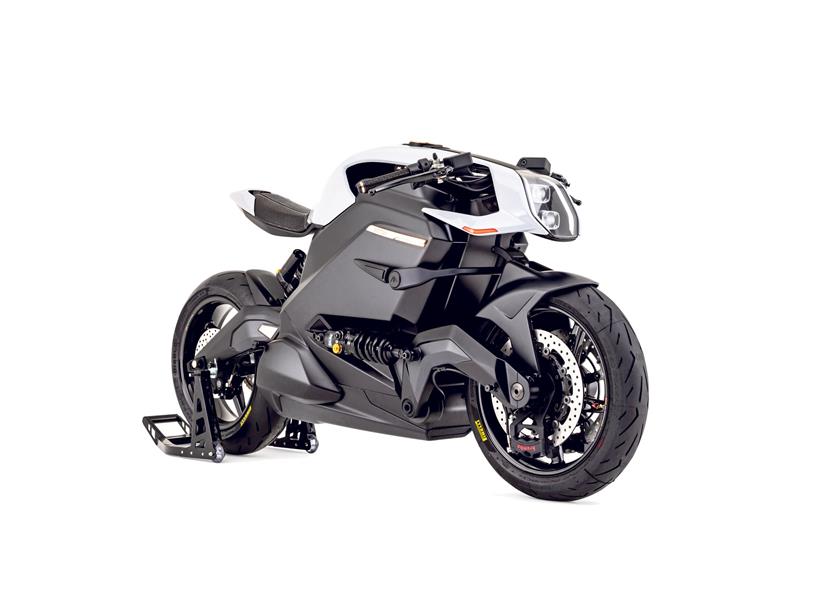
But on the Arc, the swingarm pivot point is below the wheel centre, which means when the brakes are applied the front-end dives just like a conventional fork. It still retains some advantages – it requires more energy to make the front-end dive, so the Vector can run a much softer spring and less compression damping without running the risk of bottoming-out the suspension. They can also run a much steeper head angle without encountering the stiction conventional forks would suffer from at those angles.
Are there any downsides?
Arc’s innovation doesn’t end there either. Unlike usual hub-centre systems, with a complicated set-up of rods and rose joints that robs the rider of steering feel, the Vector retains a direct steering attachment.
“The front fender is actually structural carbon fibre,” adds Truman. “It acts as the uprights for the wheel, so when you turn the bars you’re steering through the mudguard.”
And are there any downsides to this set up? Well, you guessed it – cost. The front suspension on the Arc was expensive to design, is expensive to produce and is a good part of the reason why the finished bike will set you back a rather significant £90,000.
Arc open crowdfunding scheme
First published on 28 May, 2019 by Jordan Gibbons

Start-up British electric motorcycle manufacturer, Arc, have opened their crowdfunding programme today in a drive to secure the funding required to build “the world’s most advanced electric motorcycle“.
Investors are invited to contribute to the project on Crowdcube.
Mark Truman, CEO of Arc says: “What an incredible few weeks it’s been. We had intended for Crowdcube to go live earlier in the month, but we were delayed due to the finalisation of terms with new cornerstone investors. Since we first announced the Crowdcube initiative, we have been overwhelmed with positive interest and pre-registration expressions exceeding 2,000. This is all about joining the Arc family, so whether you’re a motorbike aficionado, seasoned investor, technology or environment enthusiast, we’re inviting people to join our mission to become an established global leader in electric, recreational and luxury mobility. This unique investment opportunity is now open to the British public.”
Arc motorcycles: the story so far
Unlike some crowdfunders where you effectively just buy something in advance, the Arc scheme is a proper investment. That means if you do put your cash in, you’ll own a slice of a British motorcycle company.
Obviously if you only invest a small amount then you’ll own a teeny amount of the company, no Gordon Gecko hostile takeovers here, but in return for your support at such an early stage Arc are offering a few perks.
The perks range from the smallest investment of £500, which bags you a VIP tour of the manufacturing facility and your name inscribed on the wall, all the way up to a £500,000 investment, which gets you a custom made Arc Vector.
Now, we’re not financial experts and Arc are a young company, but how many opportunities do you get to invest in a British motorcycle manufacturer? If you’re interested head to the Arc website where there’s more info plus all the legal investor information.
The investment is part of a much larger round of fundraising, which includes the multi-year deal struck with principle backers Jaguar Land Rover.
“The motorcycle community has played a huge part in my life growing up and in who I am today and I’ve always wanted to give something back to it,” Arc founder Mark Truman told MCN.
“Inspired by the likes of Barcelona football club which is owned by the fans, it felt right to me to open Arc up to this community, giving them a chance to invest in what we’re doing and our vision to improve and protect the joys of riding a motorcycle.”

The radical electric motorcycle company have also confirmed a host of other new plans for the business, including a brand new production facility opposite Aston Martin in Wales, as well as revealing the latest steps towards getting its finished Vector bike on the road.
Since the Vector was first unveiled in November, Arc have been hard at work refining the design and testing the bike on the track. This has resulted in a decision to use a larger motor, which not only guarantees the performance required but also improves the bike’s dynamics.
Arc say they’ve gone through numerous revisions that have removed excess material, lowered the centre of gravity and reduce overall mass. With much of the testing now complete, the final parameters for the carbon swingarms are now being set allowing Arc to begin production tooling.
Arc have also announced that they are to open a new, state-of-the-art manufacturing centre in Wales. The 65,000 sqft St Athan facility will begin production in 2020 and will host not only bike production but also a club house, a test track and a helicopter landing pad, naturally.
Arc Vector key facts
- Motor: 399-volt electric
- Performance: 133bhp / 292ftlb
- Weight: 220kg (kerb)
- 362 mile range
- Price: £90,000
Eicma 2018: Arc unveil the Vector
British company Arc unveiled their all-new electric bike at Eicma 2018. All the ride info comes through a heads-up display in the helmet, which also acts as the ignition key. Riding feedback comes through electronics in your jacket, which plays music through your body.
The Arc Vector will redefine the electric class. It weighs just 220kg and develops 133bhp and 292ftlb of torque. That means it goes from 0-60 in 3.1 seconds; the same as the 2019 BMW S1000RR.
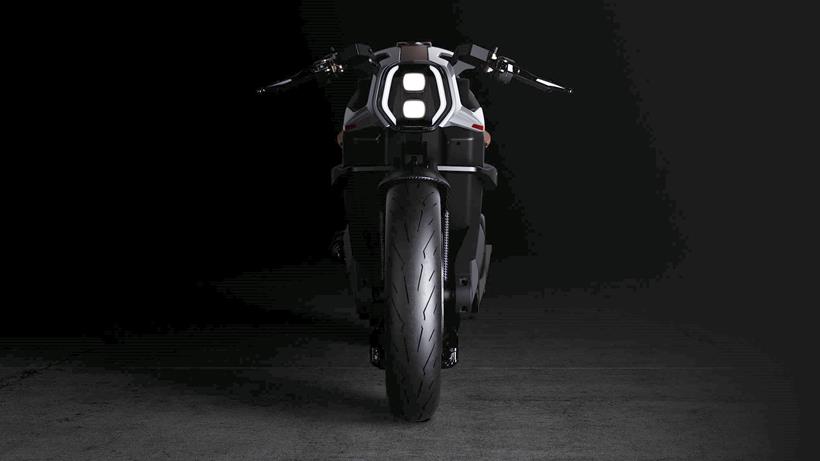
Tested to the European standard test, the Arc has a 362 miles of urban range. Better yet, use a fast charger and you’re fully powered-up in just 45 minutes.
Arc’s founder, Mark Truman, was previously the head of Jaguar’s White Space (an out-of-the-box ideas division). There he made the first concept for an electric bike, which has become the Vector.
The engineer assembled a top team, including a MotoGP chief engineer, and FEA analysis specialists, to push the idea through to development stage and ultimately production. The project has been running for two years within this Whitespace department, with Arc Vehicle Ltd being established 18 months ago.
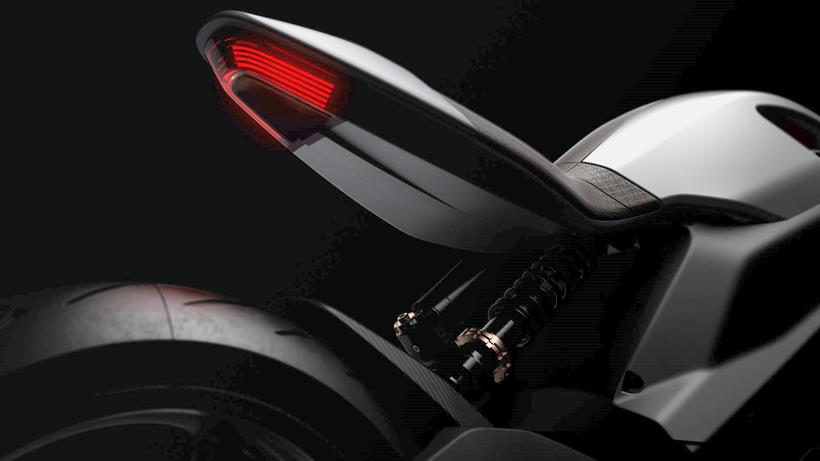
Re-shaping the electric bike landscape
Where the Arc Vector differs from other electric bikes we’ve seen is, well in pretty much everything. The whole thing is a monocoque with the battery, motor and all the internals housed in a carbon ‘tub’ that allows the front and rear suspension to be directly attached.
This not only allows it to be very stiff, it’s also very light. Arc haven’t released any figures yet but they’re saying the Vector is 25% lighter than the nearest competition. Thanks to exclusive battery tech it has a claimed 30% more capacity.
“The cells we have are still prototypes,” says Truman. “There is no other electric bike that will have the sort of cells we have.”
A Human Machine Interface
Each Vector will be custom made and will come with a helmet and jacket that form part of the system. Although the bike has to have a speedo and some idiot lights, the bulk of the info is displayed in an HUD in the helmet.
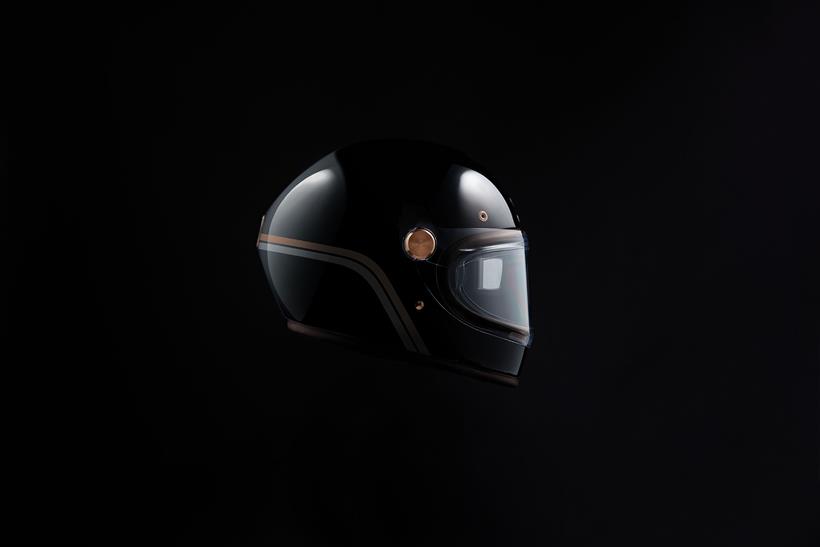
Arc have also designed a haptic jacket which has a range of abilities from pumping through your favourite music to giving you a tap on the shoulder if there’s a car approaching from behind.
The world’s most premium electric motorcycle
Truman went on to say: “Technology, performance, safety and experience come together like never before on two wheels.
“The Vector is more than just the world’s most premium electric motorcycle; it’s the world’s first motorcycle with integrated multisensory HMI (Human Machine Interface), it’s an innovative heads-up display helmet and it’s a tactile riding suit – all making up the most involving motorcycle experience on the market today.”
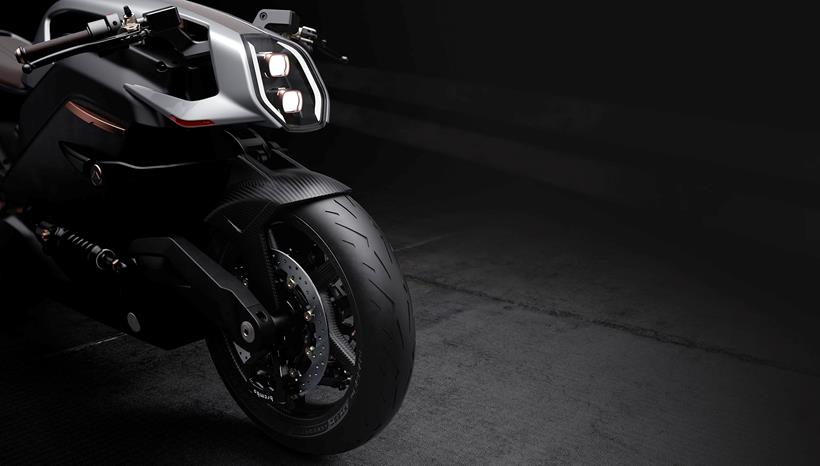
A banana swing-arm
Meanwhile, perhaps surprisingly considering the front-end, the swingarm appears to be a far more conventional banana-shaped twin spar, also damped by a fully adjustable Öhlins monoshock.
The wheels look exceptionally familiar, too – appearing to be either BST carbon fibre five-spokes, or clones of them. The rear brake caliper appears to be a twin-piston unit acting on a single disc, while the meaty front anchors look like 330mm discs being gripped by small 4-piston calipers (probably Brembo’s new Stylema calipers), unconventionally attached at the 6 o’clock position.

